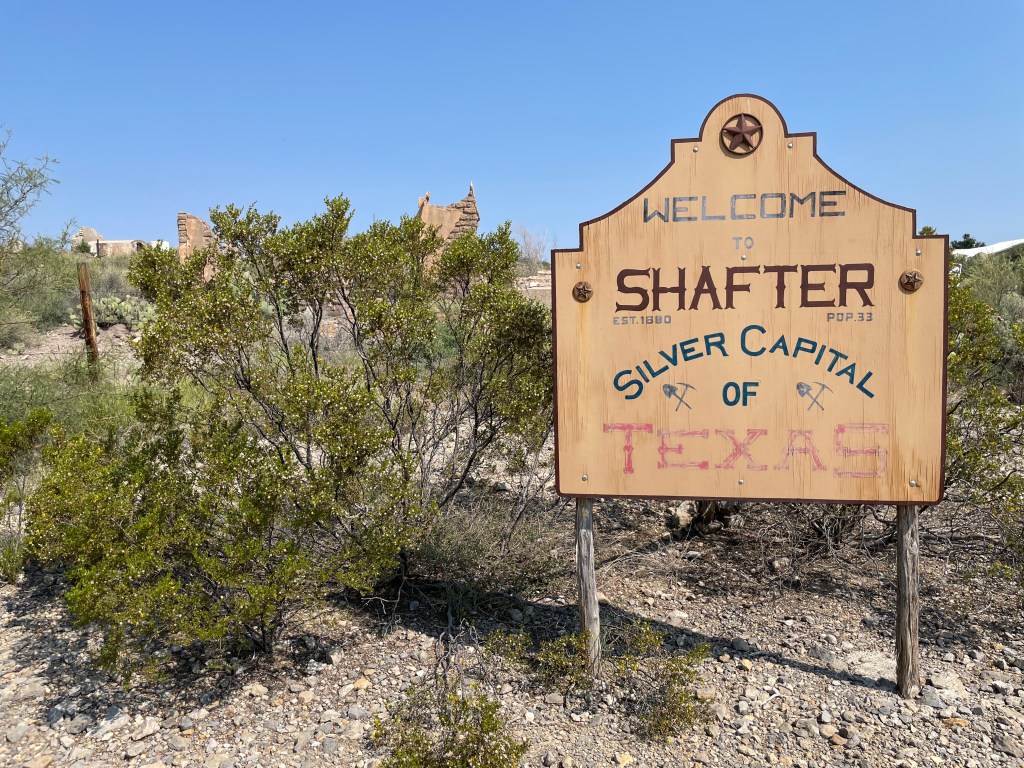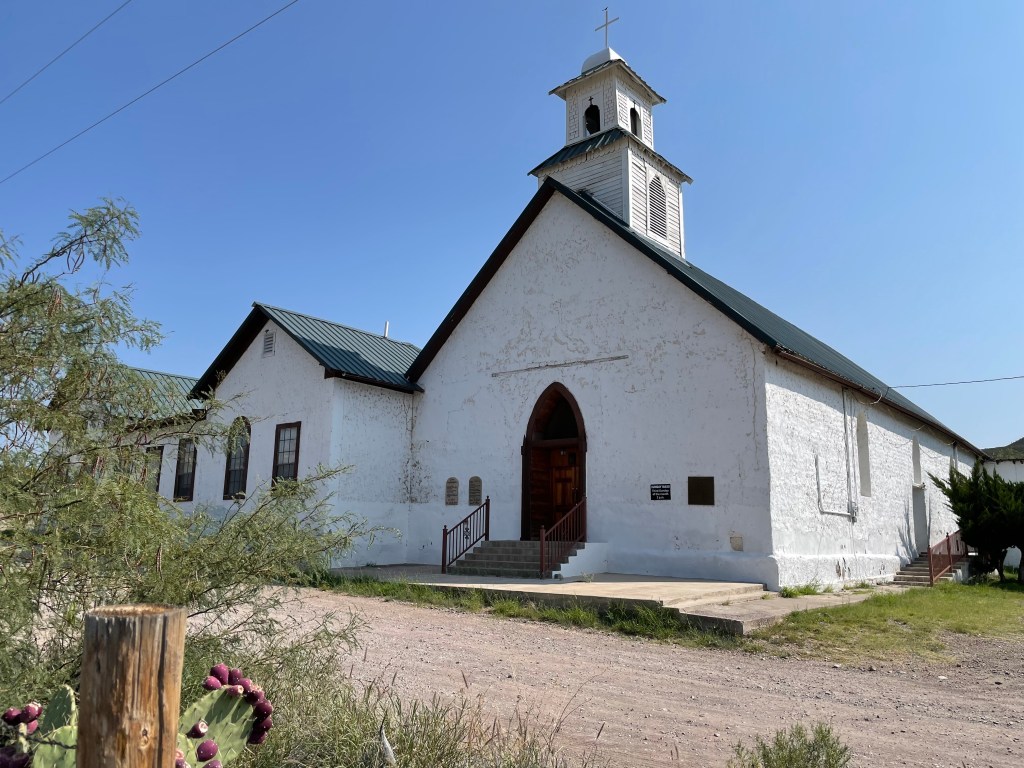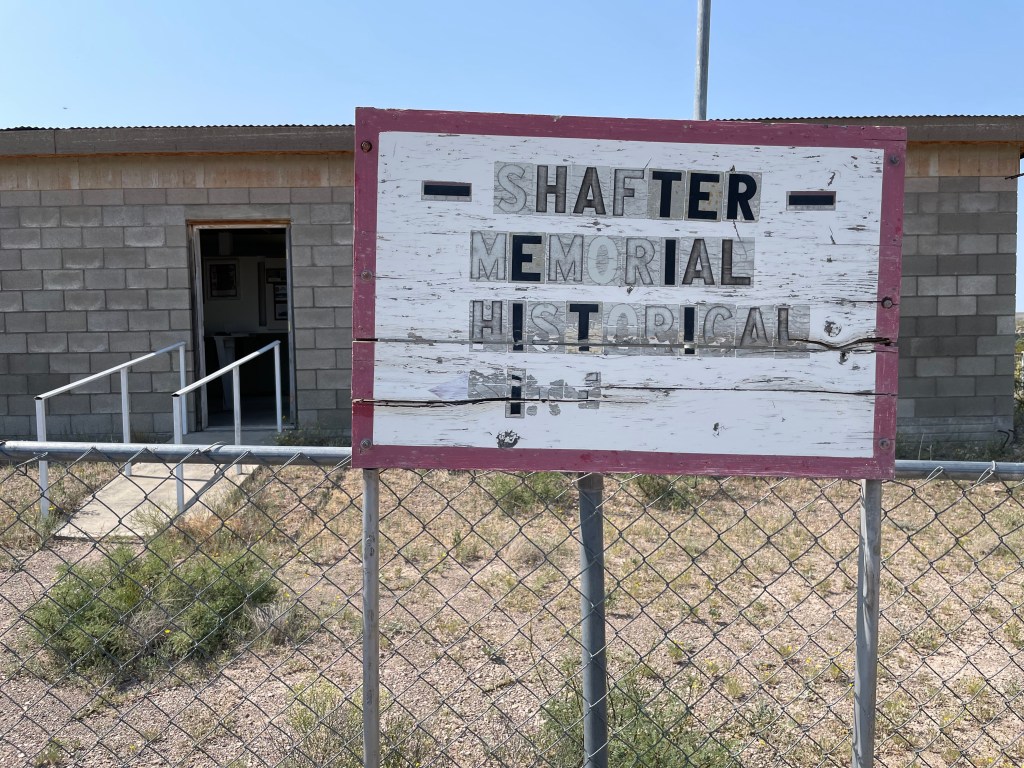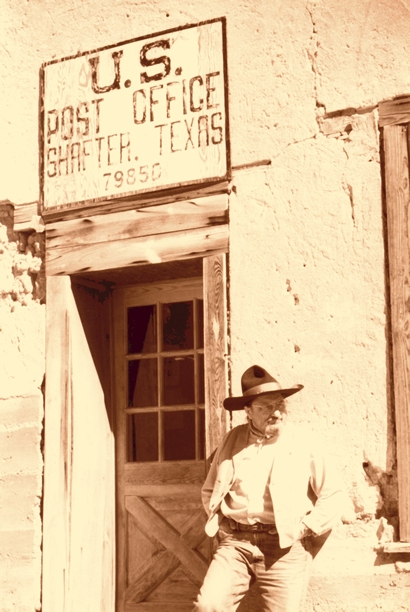The Lone Star State has more ghost towns than any other state in the Union, by some estimates as many as one-thousand.
Ghost towns are the decaying remains of yesterday’s progress — of what once was. Each ghost town has its unique story of a time when life coursed through its streets, nourishing homes and businesses and dreams.
People are the lifeblood of any community. But when circumstances force folks to leave behind a place that sustained them, then the pulse of that particular place weakens until its heartbeat can no longer be detected.

Shafter, once known as “the richest acre in Texas,” is just such a place — a ghost town slowly decaying among sagebrush and ocotillo at the east end of the Chinati Mountains in southern Presidio County. Located between Presidio and Marfa along US Highway 67, a handful of folks still live in the vicinity of Shafter.
As the story goes, a freighter turned prospector named John W. Spencer found silver ore in the Chinati Mountains in 1880. Spencer showed his find to Col. William R. Shafter, commander of the First Infantry Regiment at Fort Davis. Shafter had the sample assayed.

When Shafter learned that the sample showed small amounts of profitable silver, he wasted no time in recruiting two army friends to buy the land surrounding Spencer’s claim. However, because they lacked the technical expertise to mine the ore, they struck a deal with a California mining group in 1882.
The mining company then formed the Presidio Mining Company in 1883 and bought out the interests of Shafter and his friends, including Spencer. The mining company recruited Americans, Mexican citizens, and black Americans to work the mine.
The Presidio Mining Company provided housing, a company store, and a company doctor for mine workers — and so the town of Shafter was born. The town was granted a Post Office in 1885. Over the years the population of Shafter grew until it peaked at about 4,000 in 1940.
In 1942, the mining operation shut down for good because of labor disputes, lower grades of ore, flooding in the mines, and a depletion of silver reserves. Once that happened the population rapidly declined. By 1949, the population of the cemetery was far greater than the twenty or so folks who chose to remain in Shafter. In 1976, the Shafter Historic Mining District was added to the National Register of Historic Places.


Today, little remains in Shafter. The Sacred Heart of Jesus Catholic Church, established in 1888, is still in operation. Mass is celebrated there on the third Sunday of each month at 2:00 PM. The church is the only building in the area that has escaped the ravages of time.


A small museum housed in a cinder-block building is open to the public and features lots of old historic photos of Shafter through the years. It’s worth strolling through the history of this out-of-the-way place. Lots of interesting stuff here.


The Concordia Cemetery is worth a visit. Like the old cemetery in Terlingua Ghost Town, the names and dates on many of the grave markers have long since faded away.

The waters of Cibolo Creek trickle gently nearby, nourishing a ribbon of green through the stark desert landscape. Beyond the creek, a few homes remain where a population of 11 and maybe a few more folks have chosen to remain among the ruins of what once was the richest acre in Texas.


Enjoyed the history lesson!
LikeLike
Thanks, DT. Interesting place.
LikeLike
My mother and her family were born and raised in this town. I spent many a summer growing up rambling through the stoney trails playing cowboys and Indians. Around 1964 my siblings and I crossed the swinging bridge that fraily swung from the East to West just yards from the creek crossing as a storm brewed in the Chinati mountains bringing flooding waters that forcefully carried trees, branches and even cattle down the creek as it filled every dry, empty crack with raging water….
My aunt Guadalupe Muñoz was the Post office post master for decades. She retired and passed away shorty after my mother, her sister passed away in November of 2005. My mom was the oldest, Guadalupe was the second to the oldest, they were 2 of 5 sisters…2 brothers died at a very early age. My mother Irene Muñoz Lujan was raised by her grandmother Genuveva Lujan. Her grandparents were some of the early Spaniards to settle in the area. Oh the stories they told of the days of old! Two of the last surviving aunts still live in Shafter to this day, in the very house they were born in. They told stories of the the booming days of Shafter, the silver mining town! From the time I was 5 until I reached 14 years old, I spent 3 months of summer in Shafter…my uncle Reyes Carrillo married my aunt Teresa and had an only son Mario Carrillo, we were very close cousins. We knew just about every ruin, cactus, stoney trail and hideout in Shafter Texas! Those were the days, I literally thought they would NEVER end!
LikeLike
Wow! What wonderful reflections. Sounds like you had an amazing childhood. Thanks so much for sharing. Love it!
LikeLike
I forgot to mention my uncle Reyes Carrillo ran the one and only Saloon in town…
My aunts cleaned and maintained the only catholic church in town…of which they opened the church doors for mass once a month.
My mom’s cremated remains lie in the Shafter Cemetery, along side her parents and two sisters and brothers.
LikeLike
Loved walking through and spending time in the church building. Very cool.
LikeLike